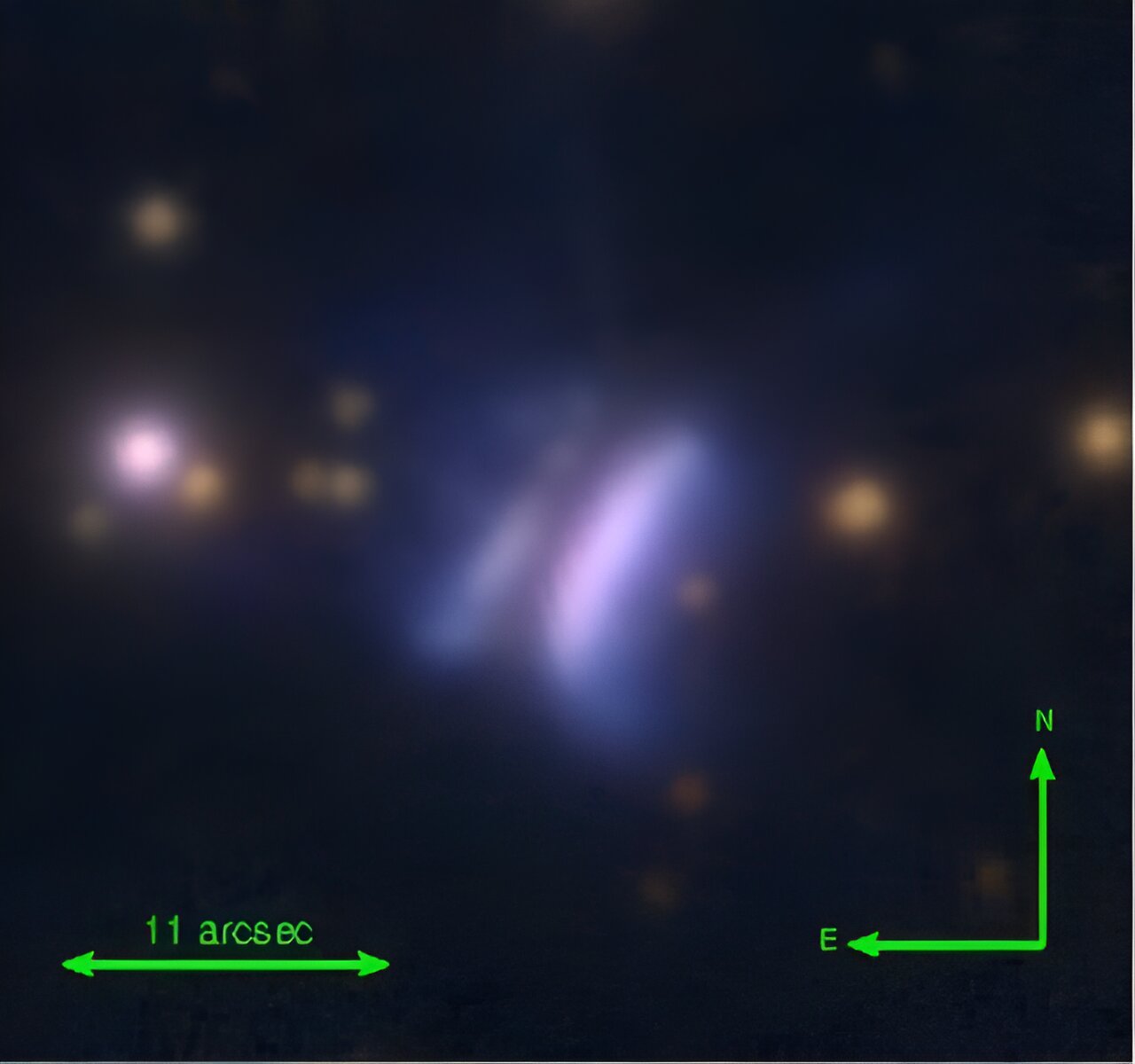
By analyzing the images obtained with the Panoramic Survey Telescope and Rapid Response System (Pan-STARRS), astronomers have serendipitously discovered a new protoplanetary disk located some 800 light years away. The finding was reported in a paper published February 1 on the pre-print server arXiv.
A protoplanetary disk is a disk of dense gas and dust, orbiting a newly formed star. It is assumed that planets are born by the gradual accumulation of material in such a structure, therefore discoveries and studies of protoplanetary disks are essential for improving our understanding of planetary formation processes.
Now, a team of astronomers led by Ciprian T. Berghea of the U.S. Naval Observatory (USNO) in Washington, DC, has discovered a new disk of this type that is associated with an infrared source known as IRAS 23077+6707. The finding was made by inspecting the Pan-STARRS data while working on a variability study of active galactic nuclei (AGN) candidates.
“We have identified a new, very large protoplanetary disk from PS1 images and confirmed the consistency of available data with a disk interpretation through radiative transfer and SED [spectral energy distribution] modeling,” the researchers write in the paper.
The newfound protoplanetary disk, dubbed Dracula’s Chivito (due to its morphology resembling the chivito sandwich—the national dish of Uruguay), has an apparent size of about 11 arcseconds. This makes it the largest protoplanetary disk so far detected.
The mass of Dracula’s Chivito was estimated to be around 0.2 solar masses and about 20% of this is in large grains. The disk, which is not associated with any known star-forming region, has an inclination angle of 82 degrees and its radius was calculated to be approximately 1,650 AU.
According to the astronomers, the Pan-STARRS images show a late A-type star surrounded by a protoplanetary disk seen almost edge-on, and by an almost dissipated envelope. Therefore, it is likely a young system, still surrounded by a very faint but visible envelope in the northern part.
The collected data suggest that the obscured star is two times larger than the sun and has a mass of about 2.5 solar masses. The star has a luminosity of about 11.46 solar luminosities and its effective temperature was estimated to be around 8,000 K.
The astronomers also report that Dracula’s Chivito showcases the presence of faint “fangs” in the northern part. They interpret them as a dissipating envelope, noting that if this hypothesis is true, it confirms that Dracula’s Chivito and its star are a young system at the end of the Class I phase.
“It is likely a young system, still surrounded by the envelope which is very faint but still visible in the PS1 images in the northern part,” the authors of the paper conclude. https://phys.org/news/2024-02-dracula-chivito-protoplanetary-disk-pan.html







Recent Comments